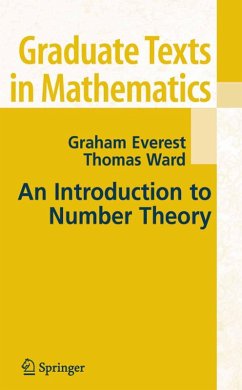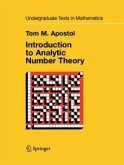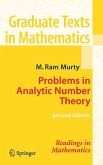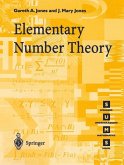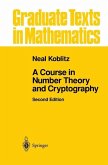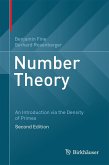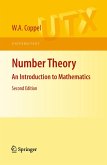An Introduction to Number Theory provides an introduction to the main streams of number theory. Starting with the unique factorization property of the integers, the theme of factorization is revisited several times throughout the book to illustrate how the ideas handed down from Euclid continue to reverberate through the subject.
In particular, the book shows how the Fundamental Theorem of Arithmetic, handed down from antiquity, informs much of the teaching of modern number theory. The result is that number theory will be understood, not as a collection of tricks and isolated results, but as a coherent and interconnected theory.
A number of different approaches to number theory are presented, and the different streams in the book are brought together in a chapter that describes the class number formula for quadratic fields and the famous conjectures of Birch and Swinnerton-Dyer. The final chapter introduces some of the main ideas behind modern computational number theory and its applications in cryptography.
Written for graduate and advanced undergraduate students of mathematics, this text will also appeal to students in cognate subjects who wish to be introduced to some of the main themes in number theory.
In particular, the book shows how the Fundamental Theorem of Arithmetic, handed down from antiquity, informs much of the teaching of modern number theory. The result is that number theory will be understood, not as a collection of tricks and isolated results, but as a coherent and interconnected theory.
A number of different approaches to number theory are presented, and the different streams in the book are brought together in a chapter that describes the class number formula for quadratic fields and the famous conjectures of Birch and Swinnerton-Dyer. The final chapter introduces some of the main ideas behind modern computational number theory and its applications in cryptography.
Written for graduate and advanced undergraduate students of mathematics, this text will also appeal to students in cognate subjects who wish to be introduced to some of the main themes in number theory.
Dieser Download kann aus rechtlichen Gründen nur mit Rechnungsadresse in A, B, BG, CY, CZ, D, DK, EW, E, FIN, F, GR, HR, H, IRL, I, LT, L, LR, M, NL, PL, P, R, S, SLO, SK ausgeliefert werden.
From the reviews: "This number theory text is somewhat different than traditional number theory texts. The authors' guiding principle is unique factorization and its consequences. ... This is not a traditional number theory text, but one that tries to guide the reader through the beginnings of the subject towards the modern frontiers. This is helped along by a good sized bibliography plus many problems ... . it might provide an interesting experience when used at the graduate level." (Don Redmond, Mathematical Reviews, Issue 2006 j) "The book under review contains several topics which are usually not brought together in an introductory text. The book is meant to give a broad introduction to advanced undergraduate students ... of number theory. ... Each chapter contains many exercises and historical notes. ... In my opinion, because so many topics are treated in an accessible way, the book is very well suited for an introductory course in number theory." (Jan-Hendrik Evertse, Zentralblatt MATH, Vol. 1089 (15), 2006) "In An Introduction to Number Theory, the authors strive to have the best of all worlds: they cover a broad range of topics ... . This book could be used for a number of different courses. ... The full book would be appropriate for a first-year graduate course. It's also a nice introduction to the subject for established mathematicians form other fields. ... its extensive bibliography, tasteful collection of topics, and clear presentation make it a pleasant reference even for working number theorists." (Rob Benedetto, MathDL, January 2006)

